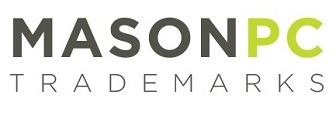Trademarks in the form of acronyms i.e., consisting simply of letters of the alphabet are generally considered to possess a low level of inherent distinctiveness.
As is firmly rooted in Canadian law, trademarks on the lower end of the distinctiveness spectrum are correspondingly entitled to a narrow scope of protection. This principle was recently underscored in the 2021 Federal Court case of Chartered Professional Accountants of Ontario vs the American Institute of Certified Public Accountants.

This case is a statutory appeal of a decision of the Canadian Trademarks Opposition Board (TMOB), in finding that the trademark THIS WAY TO CPA did not closely resemble the mark CPA and was therefore registrable.
To briefly recount the history, the American Institute of Certified Public Accountants (“AICPA”) applied to register the mark THIS WAY TO CPA as a trademark in Canada in association with accounting association services. Chartered Professional Accountants of Ontario (“CPA Ontario”) owned the mark CPA which was advertised as an official mark in Canada. CPA Ontario opposed AICPA’s application on the ground that the mark THIS WAY TO CPA so closely resembled CPA such that it was likely to be mistaken for it.
From the outset, it is important to note that the confusion analysis, in this case, was between an official mark (CPA) and a trademark (THIS WAY TO CPA).
Official marks are an unusual feature of Canadian trademark law. They are signs that have been adopted and used by public authorities, in Canada, and for which public notice has been given under the Trademarks Act. The granting of an official mark precludes the adoption, including the use and filing, of a trademark that is identical or similar to the official mark, irrespective of the goods or services associated with the trademark.
The question of whether a trademark is likely to be mistaken for an official mark is one of straight resemblance and imperfect recollection. That really is it.

Other considerations that would apply in a likelihood of confusion analysis between two trademarks (such as nature of the goods and trade) are not relevant to an assessment of whether a proposed trademark is likely to be mistaken for an official mark by virtue of close resemblance.
CPA Ontario argued that there was a high degree of resemblance between CPA and THIS WAY TO CPA. In particular, it contended that the marks strongly resembled each other in meaning and context since CPA is a professional accounting designation (Chartered Professional Accountants) in Canada, and the mark THIS WAY TO CPA clearly points to CPA through the signpost of the words “THIS WAY TO”. CPA Ontario argued further that CPA, being the entirety of its official mark was the most striking and unique aspect of AICPA’s THIS WAY TO CPA mark. CPA Ontario relied on the landmark case of Masterpiece Inc. vs Alavida Lifestyles Inc. in which the Supreme Court of Canada confirmed that the preferable approach to assessing trademark resemblance is to consider whether an aspect of the mark is particularly striking and unique.
Notwithstanding these arguments, the TMOB and the Federal Court disagreed with CPA Ontario and allowed AICPA’s THIS WAY TO CPA mark to proceed to registration. Firstly, the Federal Court and the TMOB noted that CPA was an acronym merely consisting of letters of the alphabet. Importantly, it was determined that CPA Ontario’s submissions on the resemblance between the two marks were premised on its own presumptions about the meaning of its official mark CPA and the meaning of CPA as an element within THIS WAY TO CPA. This was one of the critical factors on which the TMOB and Federal Court arrived at their respective decisions.
The fact is that CPA were really just letters and CPA Ontario attempted to ascribe meanings to these letters (i.e Chartered Professional Accountant) as they appeared in its mark and AICPA’S mark, and those meanings were not supported by evidence in the proceedings.
In this regard, the court held that the CPA mark did not convey any apparent or “inherent” meaning on its own and did not inherently suggest an idea. If CPA had become known as a Canadian accounting designation, then CPA Ontario was required to establish its meaning through evidence i.e. to essentially show acquired distinctiveness.
Additionally, and much to CPA Ontario’s chagrin, the court considered the meaning of the American CPA designation (Certified Public Accountant) which had been in use for many years even by qualified Canadian individuals. This, in the absence of evidence to the contrary, was found to coincide with the TMOB’s finding that CPA in THIS WAY TO CPA would not automatically be understood to point to or connect with the Canadian CPA designation.

Importantly, and at the crux of this judgment, was the TMOB’s and Federal Court’s acknowledgement that the mark CPA, being an acronym, made up of letters of the alphabet, was entitled to very little protection. Accordingly, the TMOB found, and the Federal Court agreed, that both CPA and THIS WAY TO CPA could coexist on the register. In particular, the words “THIS WAY TO” at the beginning of the THIS WAY TO CPA mark was found to distinguish it from CPA such that the marks did not closely resemble each other.
This case cannot ring clear enough that acronyms will only be granted a narrow scope of protection. We feel almost certain that this case would have been decided differently if the official mark consisted of an element that was highly distinctive. It is very possible that members of the public will connect or associate THIS WAY TO CPA with CPA but, as this decision shows, courts are generally unwilling to grant monopolies over mere acronyms in the absence of strong evidence of acquired distinctiveness. Importantly, courts will consider other meanings that other traders ascribe to an acronym for the purpose of their business, and this will be a factor against a trader trying to enforce an acronym as a trademark. If anything, this decision would discourage such a practice and forewarns of future issues of enforcement and exclusivity.


